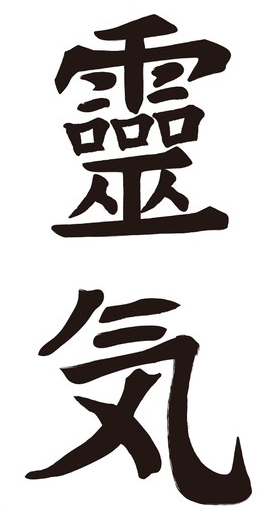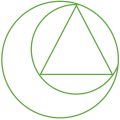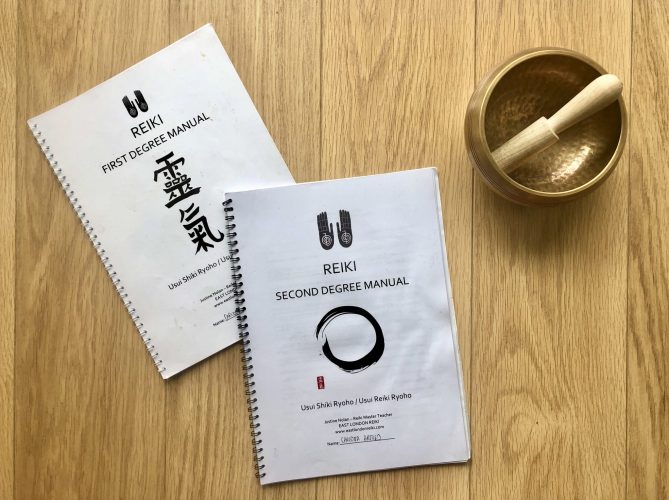As many of you asked additional information about Reiki, I wanted to share a wider introduction to what Reiki is and where it comes from.
What is Reiki
Reiki is an ancient healing technique that balances the energy flow within the body, treating physical, mental and emotional unbalance.
It is something that is to be experienced and felt rather than explained. I remember my first Reiki session I had with Toseki An, before I completed the Reiki 1 course. I was excited, but I had no clue what to expect.
Immediately after laying down on the bed, my soul felt bare. I remember feeling calm and peaceful. Though his hands were barely touching me, I could feel the heat entering my body, which kept tingling throughout the session. I walked home feeling peaceful and light, and I was grounded and connected in the upcoming days.
This is what Reiki is about, or at least it is for me. It’s my “tool” to bring a sense of peace and connection within the universe and myself, keeping me grounded, calm and content.
Reiki etymology
The best translation of the word Reiki is “spiritual energy”, and refers to the universal energy which animates all living things. As we approach the spiritual field, most of you might think Reiki is something affiliated with a religion or religious practice. However, we’re in the energetic field and energy is all around us.
I remember being astonished by the course, while Justine from East London Reiki was talking through it.
The word Reiki comes from the Japanese word Rei which means “spirit” and “source” and Ki which means ‘energy’.

Rei
- The first line of the character is the Japanese way to refer to “oneness”
- Right underneath is the symbol from bringing rain from the heavens
- The rain ends up on three containers, which represents the mind, body and spirit
- All together this symbol reminds us of a Shaman who brings the rain down to Earth
Ki
- The asterisk refers to a grain of rice, as rice was the main food in Asia
- It is surrounded by energy, which symbolises the earth energy
In a nutshell, the symbol tells us that Reiki is the process where we bring the spiritual energy down to earth.
Reiki history
Reiki was rediscovered and developed in Japan by Miako Usui in the early 1920s. He grew up with Buddhist teachings and he had always been interested in the whole spiritual world, which led him to explore various meditation and spiritual techniques.
He held various positions as entrepreneur, social worker and personal secretary to the mayor of Tokyo, which allowed him to travel around the world. He eventually set up his own business, which failed, and he had to declare bankruptcy. This is considered a huge dishonour in Japan.
Therefore, he went to Mount Kurama where after fasting and meditating for 21 days, he experienced a moment of enlightenment and he was one with the universe.
Climbing down the mountain, he found out he was able to channel healing energy through his palms. Firstly, he cut his toe and was able to heal it with his hands, and he then met a man with tooth pain and managed to cure him with just his touch.
Returning to Tokyo, he began to offer healing to people and his tradition and methods were passed through several grandmasters of Reiki.
The first “foreigner” to learn the system was Hawayo Takata, an American citizen of Japanese heritage, who brought Reiki back to Hawaii from where it was spread around the world. And it arrived to me through the below teacher, which transmit the attunements to Justine, who attuned me.
- Mikao Usui
- Chujiro Hayashi
- Hawayo Takata
- Phyllis Lei Furumoto
- Carrel Ann Farmer
- Leah Smith
- William Lee Rand
- Penelope Quest
- Torsten Lange
- Justine Nolan
- Me
The Reiki Principles
Mikao Usui recommended following five principles. I remember the first time I read them; it struck me as being common sense. And this is true.

– Just for today
– Do not anger,
– Do not worry,
– Work with diligence
– Be grateful
– Be Kind
(The image is the actual paper where my Reiki Master wrote them during my 1st course, not sure why but I felt that I wanted to keep it J).
However, many times we forget it, and I invite you to incorporate them within your morning meditation, if you have one. You could use them as a mantra, or just simply read this before or after.
If you don’t have one yet, please have a look at my love Russell Brand giving a fantastic intro to Meditation here. I am a big fan of him, but if you don’t like him there are plenty of Youtube videos to start with. Have a go with a five to ten minutes a day practice, ideally in the morning, and I promise you will find it extremely beneficial and you will build this up really quick.
Scientific evidence
Some people consider Reiki as a pseudoscience, i.e. “a science based on statements, beliefs, or practices that are claimed to be both scientific and factual but are incompatible with the scientific method”.
I recommend this website where you will find plenty of scientific research on its benefits – William Rand, founder and president of the International Center for Reiki Training (https://www.centerforreikiresearch.org/), formulated “The Tochstone Process”, a “uniquely rigorous peer review method for analysing a group of scientific studies around Reiki”. For example, there are numerous articles about scientific trials and experiments on the benefits of Reiki treatments on hospital patients.
If you want to know more, I’ve also written a feature for Female First titled 7 things you didn’t know about Reiki.
I hope this brief theory lesson was useful for you. As mentioned, I strongly invite you to start a meditation practice. Five to 10 minutes a day as is more than enough. You won’t regret it .
Stay well and stay connected,
Carlotta x
//
“If you come here, you will find a hidden treasure” – Paulo Cohelo




